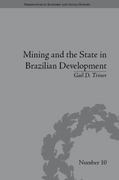Question
Suppose there are two types of potential borrowers. Half are the (A)borrowers who have projects that require an investment of 1 unit. They have equal
Suppose there are two types of potential borrowers. Half are the (A)borrowers who have projects that require an investment of 1 unit. They have equal probability of returning 3 or 0 gross in one year. The other half are the (B) borrowers, who have projects that also require 1 unit investment and a gross return of 8 with probability 1/8 or 0 with probability 7/8 in one year. Lenders require an expected gross return of one unit gross in one year on one unit loaned (i.e. they will lend if they receive a net interest rate of 0). Assume that there is perfect competition so that lenders must earn their minimum (0 net) in any equilibrium.
First, find the equilibrium interest rates on the on loans to each in the case of symmetric information. (Note that they will differ.) Under asymmetric information, where the lenders cannot distinguish between types but know the distribution of potential borrowers, what equilibrium interest rate will be charged and who will borrow? Explain. Characterize the inefficiency that results from asymmetric information.
Step by Step Solution
There are 3 Steps involved in it
Step: 1

Get Instant Access to Expert-Tailored Solutions
See step-by-step solutions with expert insights and AI powered tools for academic success
Step: 2

Step: 3

Ace Your Homework with AI
Get the answers you need in no time with our AI-driven, step-by-step assistance
Get Started


